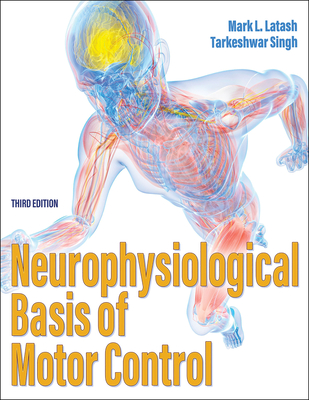You are here
Back to topNeurophysiological Basis of Motor Control (Paperback)
$166.60
Usually Ships in 1-5 Days
Description
The study of motor control is evolving into a field of natural science comparable in its rigor and exactness to established fields such as classical physics. This advancement necessitates a resource that offers more precise terminology and rigorous logics. Neurophysiological Basis of Motor Control, Third Edition, rises to the challenge by building on its foundation with thoroughly updated information, expanded content, and an organizational overhaul. By emphasizing the neurophysiological mechanisms involved in the processes of generating voluntary movements, the text offers a distinct understanding of how the brain generates control signals and how the body executes them.
Author Mark Latash, PhD—founding editor of the journal Motor Control and past president of the International Society of Motor Control (ISMC)—combines his expertise with the experience of new coauthor Tarkeshwar Singh, PhD, director of the Sensorimotor Neuroscience and Learning Laboratory at Penn State University. In the third edition of this book, previously titled Neurophysiological Basis of Movement, the authors present the following:
- New chapters on motor learning and sensorimotor integration
- Expanded sections dedicated to the role of different sensory modalities in motor control, kinesthetic perception, and action–perception interactions
- An exploration of the basis of neuroanatomy, aging and development, motor disorders, and basic concepts such as coordination, reflexes, voluntary movement, sensation, and perception
Neurophysiological Basis of Motor Control, Third Edition, deepens students’ knowledge of the link between the brain and movement with basic facts about neural motor control, neuroanatomy, and movement disorders. The text will help usher in a new era in the study of motor control, promoting independent thinking and sharing thought-provoking ideas on current theories of motor control and coordination.
About the Author
Mark L. Latash, PhD, is a distinguished professor of kinesiology and the director of the Motor Control Laboratory at Penn State University. His research interests are the control and coordination of human voluntary movements, movement disorders in neurological patients, and effects of rehabilitation.
Latash has authored five books, edited 10 books, and had more than 400 peer-reviewed articles published. He was the founding editor of the journal Motor Control and is a former president of the International Society of Motor Control (ISMC). He is a fellow of the National Academy of Kinesiology (NAK) and member of the Society for Neuroscience (SfN). He has served as director of the annual Motor Control Summer School series and is a recipient of the ISMC’s Bernstein Prize in motor control and Penn State’s Pauline Schmitt Russell Distinguished Research Career Award.
Tarkeshwar Singh, PhD, is an assistant professor of kinesiology at Penn State University, where he serves as the director of the Sensorimotor Neuroscience and Learning Laboratory. Singh’s research interests are in the areas of multisensory integration, motor control, eye movements, and movement disorders. He has published over 30 peer-reviewed papers and three book chapters. He is a member of the Society for Neuroscience (SfN), the International Society of Motor Control (ISMC), the Society for the Neural Control of Movement (NCM), and the American Physiological Society (APS).
